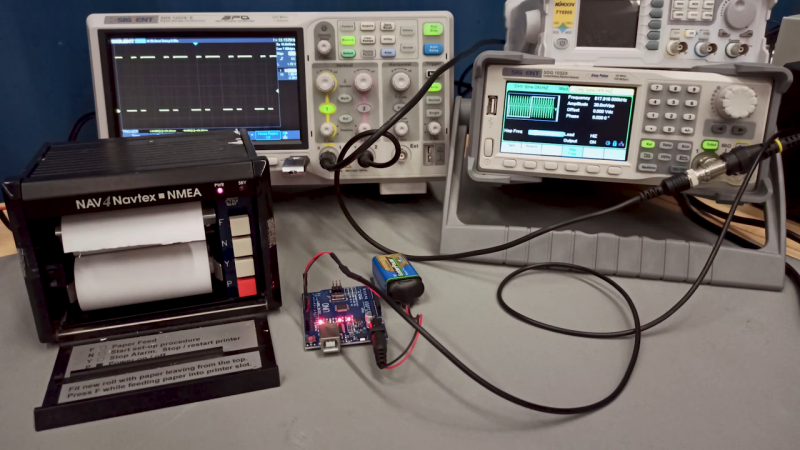I’m going to need some parts to play with for the circuits course. While I probably could get the parts I need at work from the Baskin Engineering Lab Support (BELS) staff, it would probably involve a bit of hassle, as there isn’t even a course number for the course yet, and so they’d have a difficult time figuring out which department to charge for the 30¢ and 60¢ parts—the cost in staff time (and my time) would be ridiculous. So I decided to buy my own parts with my own money from Digikey. My experience with them in the past is that in-stock parts generally get delivered by US mail within 2 days of ordering (it helps that they are not far away).
One experience we don’t give the students (at least, not until the senior design project) is trying to figure out what parts to buy. It can be an overwhelming task—DigiKey has in stock 10,917 chips that come up in response to a search for op amps. We can reduce that to 1,249 if we restrict ourselves to through-hole rather than surface-mount parts. Adding a request for rail-to-rail outputs reduces that number to 314. Sorting by price and looking through those under $1 shows many from Microchip Technology, each with slightly different specs. I don’t see any way that a student in a beginning circuits class could make sense of most of the specs.
Thermistors are almost as bad, as there are a lot of specs for them also, and the price range is huge. You have to know that you want NTC (negative thermal coefficient) devices, which gets you down to 1,369 thermistor types. Eliminating surface mount parts reduces the number to 479, ranging in price from 23.5¢ each to $20 each.
I’ve decided to play with three different thermistors:
- Vishay BC Components NTCLE100E3103JB0 a very cheap (23.5¢ each in quantities of 10) 10kΩ thermistor with B-value 3977K). There is high variation in the resistance (±5%), but low variation in the B-value (±0.75%). These are glass-bead thermistors with short leads and will need some sort of waterproofing for the labs.
- The epoxy-coated Vishay BC Components NTCLE413E2103F520L has 50mm leads and is epoxy coated, but with the warning “Not intended for fluid immersed applications or continuous contact with water.” It is a 10kΩ thermistor with B-value 3435K, both ±1%, and costs 34.9¢ each in quantities of 10. It may be waterproof enough for the relatively short duration of the labs, and the 2″ leads may make it easier to use with disposable thermometer covers from the drugstore.
- Murata Electronics North America NXFT15XH103FA2B100 a 10kΩ thermistor with B-value 3431K, with low resistance variation (±1%) and moderate B-value variation (±1%). Note: the specs give different B-values depending which pair of temperatures used—I’ll have to look to see if they have specs for higher-order models of the resistance as a function of temperature. Although these thermistors cost more (66¢ each in quantities of 10), they have 100mm insulated, flexible leads, which should be long enough that we use these in a coffee-cup water bath, though they come with the warning not to use them in wet or humid locations, nor “Places with salt water, oils, chemical liquids or organic solvents”. The long flexible leads may make this one the easiest to use with disposable thermometer covers.
It looks like I’d have to go to $2–$4 per part for thermistor probes with a brass, copper, or plastic sheath, and even then the manufacturers don’t say that they are waterproof.
I also decided to get myself some op-amp chips to play with, since we will certainly be assigning some op-amp labs. Because I don’t have a bench power supply, I want to use a single power supply, like a 5v wall wart (or the 5v supply for the Arduino). I also want a DIP package, so that I can use the op amp on a breadboard. I looked for cheap op amps on Digikey, and the best choice I found was a Microchip Technology MCP6002-I/P (33¢ each in quantities of 10) for a dual op amp with rail-to-rail output. It is a bit slow (1MHz gain-bandwidth product, 0.6V/µsec slew rate), but has a low input bias current (1pA) and will run on a single power supply anywhere from 1.8V to 6V, so should be easy to use with batteries or the Arduino power supply.
I will have to be careful not to blow up the chips with my function generator, though, as I believe it has a 10V peak-to-peak output. Maybe I won’t have to worry about it—I just tried to turn on my function generator to check the output voltage, and it won’t turn on. The fuse looks ok, but I don’t even get a power-on light, much less any signal at the output. I don’t know whether I want to try debugging it or not, given that I don’t even have a manual for it, much less a schematic. It worked fine the last time I turned it on, so I’ve no idea what the problem is. I suppose I should have expected it, buying cheap, old equipment on e-bay, but I didn’t expect the function generator to fail after I had checked that it was working. It will be harder for me to develop a lab that uses a function generator, though, if I don’t have a functional one to test the lab with. I wonder whether it is better to try to fix the one I have or get another one.
The students will have Agilent 33120A Function/Arbitrary Waveform Generators to work with, which are very nice instruments, but out of my price range ($1300 refurbished on e-bay, $2200 MSRP). I could get a cheap Victor VC2002 for about $130, which is about as good a price as the used stuff on e-bay.
Filed under:
Circuits course Tagged:
Arduino,
bioengineering,
circuits,
course design,
function generator,
op amp,
teaching,
temperature measurement,
thermistor 










